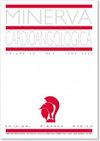Antiplatelet strategies in acute coronary syndromes: design and methodology of an international collaborative network meta-analysis of randomized controlled trials.
Q3 Medicine
引用次数: 0
Abstract
INTRODUCTION The optimal choice of oral P2Y12 receptor inhibitors has the potential to significantly influence outcomes. We seek to compare the safety and efficacy of the three most commonly used oral P2Y12 receptor inhibitors (clopidogrel, prasugrel, and ticagrelor) in acute coronary syndromes (ACS) via a comprehensive systematic review and network meta-analysis. EVIDENCE ACQUISITION We will perform a comprehensive search for randomized clinical trials which compared cardiovascular and hemorrhagic outcomes after use of at least two of the distinct oral P2Y12 receptor inhibitors (i.e. clopidogrel, prasugrel, and ticagrelor). In addition, key inclusion criteria will be trial size of at least 100 patients and at least 1 month of follow-up time. Several pre-specified subgroups will be explored, including Asian patients, patients presenting with ST-elevation myocardial infarction, patients of advanced age, and others. EVIDENCE SYNTHESIS Exploratory frequentist pairwise meta-analyses will be based primarily on a random-effects method, relying on relative risks (RR) for short-term endpoints and incidence rate ratios (IRR) for long-term endpoints. Inferential frequentist network meta-analysis will be based primarily on a random-effects method, relying on RR and IRR as specified above. Results will be reported as point summary of effect, 95% CI, and p-values for effect, and graphically represented using forest plots. CONCLUSIONS An international collaborative network meta-analysis has begun to comprehensively analyze the safety and efficacy of prasugrel, ticagrelor and clopidogrel, each on a background of aspirin, for management of patients with ACS. It is our hope that the rigor and breadth of the undertaking described herein will provide novel insights that will inform optimal patient care for patients with ACS treated conservatively, or undergoing revascularization.急性冠状动脉综合征的抗血小板策略:随机对照试验的国际协作网络荟萃分析的设计和方法。
口服P2Y12受体抑制剂的最佳选择有可能显著影响预后。我们试图通过一项全面的系统评价和网络meta分析来比较三种最常用的口服P2Y12受体抑制剂(氯吡格雷、普拉格雷和替格瑞洛)在急性冠脉综合征(ACS)中的安全性和有效性。我们将对随机临床试验进行全面检索,这些试验比较使用至少两种不同的口服P2Y12受体抑制剂(即氯吡格雷、普拉格雷和替格瑞洛)后的心血管和出血结局。此外,主要入选标准将是至少100例患者的试验规模和至少1个月的随访时间。将探讨几个预先指定的亚组,包括亚洲患者、st段抬高型心肌梗死患者、老年患者等。探索性频率配对荟萃分析将主要基于随机效应方法,依赖于短期终点的相对风险(RR)和长期终点的发病率比(IRR)。推理频率网络元分析将主要基于随机效应方法,依赖于如上所述的RR和IRR。结果将以效果点总结、95% CI和效果的p值报告,并使用森林图以图形表示。结论一项国际协作网络荟萃分析已经开始全面分析普拉格雷、替格瑞和氯吡格雷在阿司匹林背景下治疗ACS患者的安全性和有效性。我们希望本文所描述的研究的严谨性和广度将提供新的见解,为保守治疗或进行血管重建术的ACS患者提供最佳的患者护理。
本文章由计算机程序翻译,如有差异,请以英文原文为准。
求助全文
约1分钟内获得全文
求助全文
来源期刊

Minerva cardioangiologica
CARDIAC & CARDIOVASCULAR SYSTEMS-
CiteScore
1.60
自引率
0.00%
发文量
0
审稿时长
>12 weeks
期刊介绍:
A Journal on Heart and Vascular Diseases.
 求助内容:
求助内容: 应助结果提醒方式:
应助结果提醒方式:


